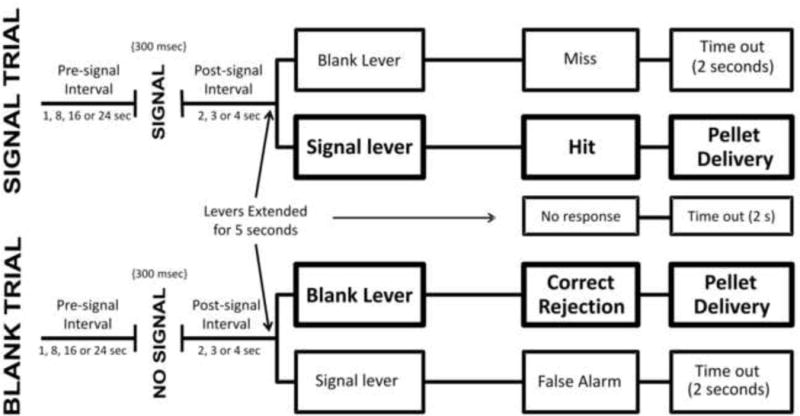Figure 2.

The procedures for either a signal trial (top), defined as a change in signal light intensity, or blank trial (bottom), defined as no change in signal light intensity, are shown. Both trial types started immediately following the completion of the previous trial. The signal trial (top) started with a pre-signal interval, followed by a brief increase in illumination of the signal light (i.e. signal). After the signal, there was a post-signal interval and then the levers were presented for the animal to emit a response. For signal trials, a correct response was defined as a “hit” and resulted in the delivery of food pellet, while an incorrect response was defined as a “miss” and resulted in a “timeout.” Blank trials (bottom) were identical to signal trials, except that no signal followed the pre-signal interval (i.e. no increase in illumination). For blank trials, a correct response was defined as a “correct rejection” and resulted in a food pellet, while an incorrect response was defined as a “false alarm” and resulted in a “timeout.” Response omissions resulted in a “timeout.”
